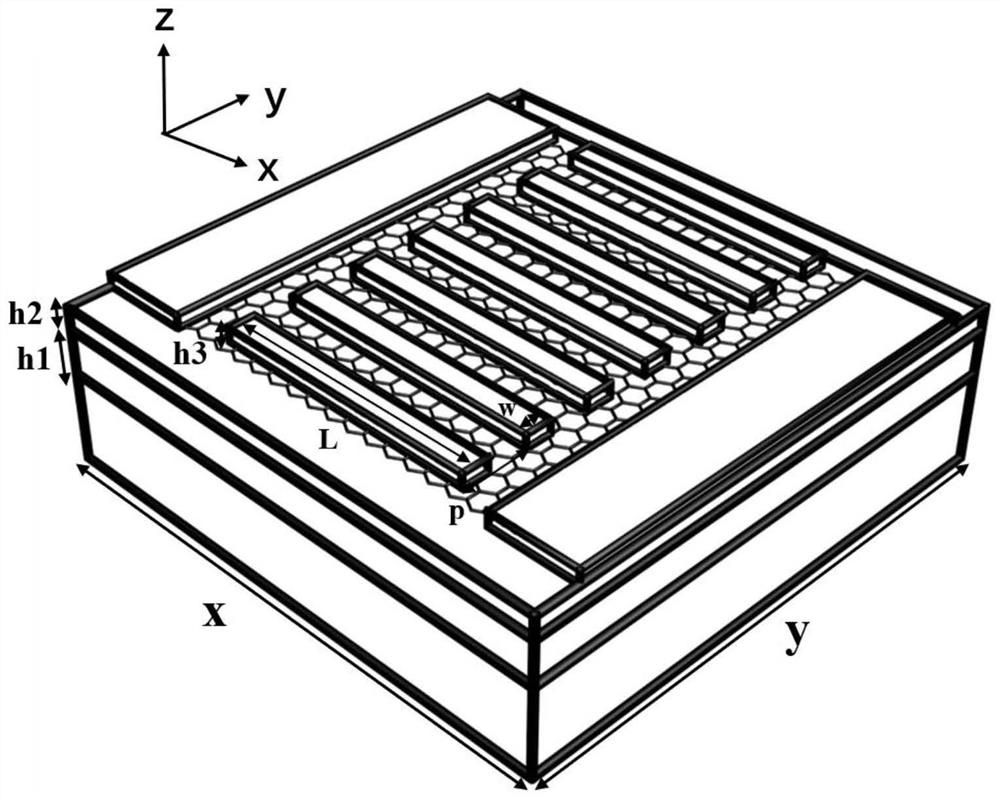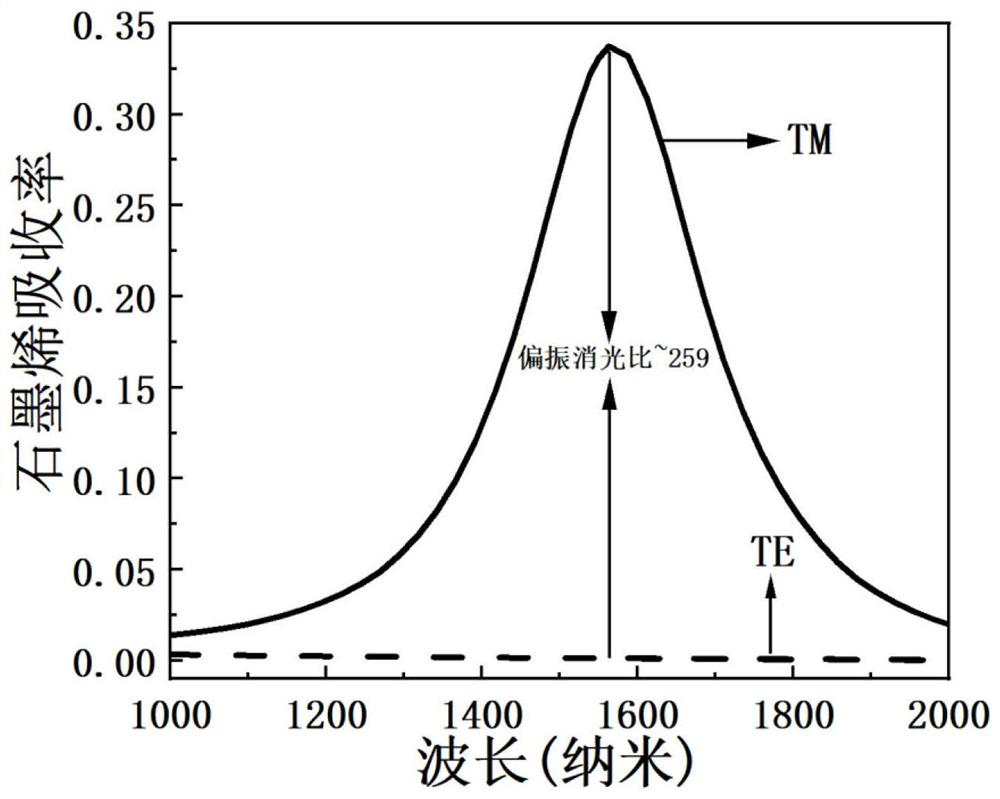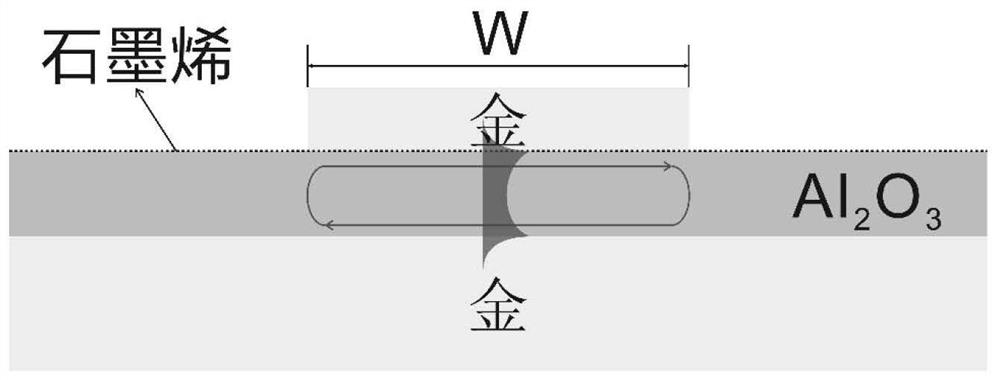Anisotropic plasmon resonant cavity graphene polarization detector and design method
A plasmonic and anisotropic technology, applied in the direction of measuring the polarization of light, instruments, measuring devices, etc., can solve the problems of large volume, low sensitivity, complex structure of the optical path segmentation method, etc.
- Summary
- Abstract
- Description
- Claims
- Application Information
AI Technical Summary
Problems solved by technology
Method used
Image
Examples
Embodiment example
[0027] The resonance wavelength of the graphene phototransistor integrated in the plasmonic resonator cavity of this embodiment is 1.55 μm, the metal reflective surface and the metal grid are made of gold, and the dielectric spacer layer is made of Al 2 o 3 , and covered with a single layer of graphene, and finally covered with metal bars on the graphene. The size of the structure obtained through electromagnetic simulation optimization is: x=0.75μm, y=0.75μm, w=242nm, p=588nm, L=0.45μm, h 1 =100nm, the thickness of the dielectric spacer layer 3 obtained through simulation optimization is h 2 = 30nm Al 2 o 3 . The material of the metal bar grid layer 4 is gold, and the thickness is h 3 = 50nm, including 10nm thick Cr and 40nm thick Au. figure 2 is the absorption spectrum of graphene under the irradiation of the incident light (TM wave) with the polarization direction perpendicular to the metal grid and the incident light (TE wave) with the polarization direction paralle...
PUM
 Login to View More
Login to View More Abstract
Description
Claims
Application Information
 Login to View More
Login to View More - R&D
- Intellectual Property
- Life Sciences
- Materials
- Tech Scout
- Unparalleled Data Quality
- Higher Quality Content
- 60% Fewer Hallucinations
Browse by: Latest US Patents, China's latest patents, Technical Efficacy Thesaurus, Application Domain, Technology Topic, Popular Technical Reports.
© 2025 PatSnap. All rights reserved.Legal|Privacy policy|Modern Slavery Act Transparency Statement|Sitemap|About US| Contact US: help@patsnap.com



